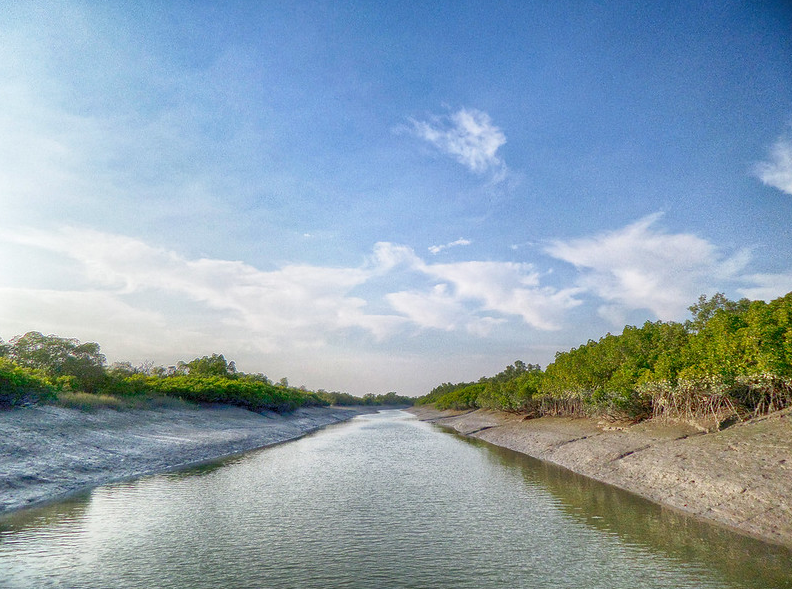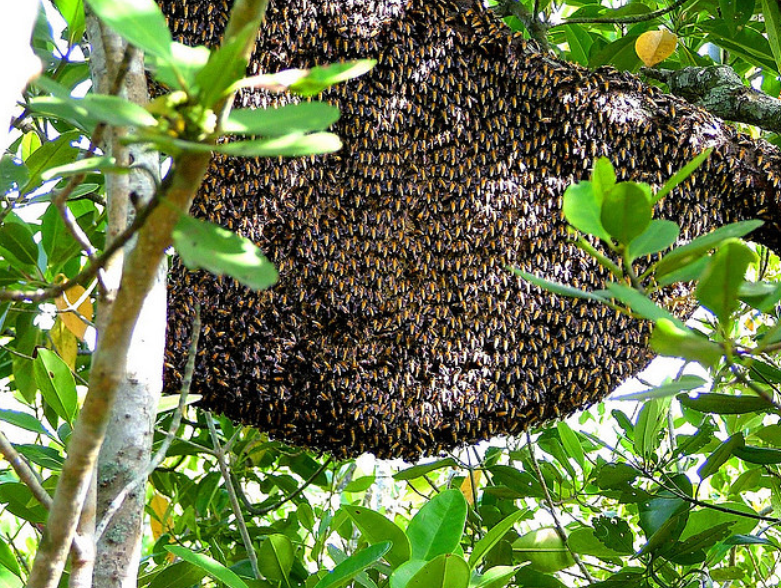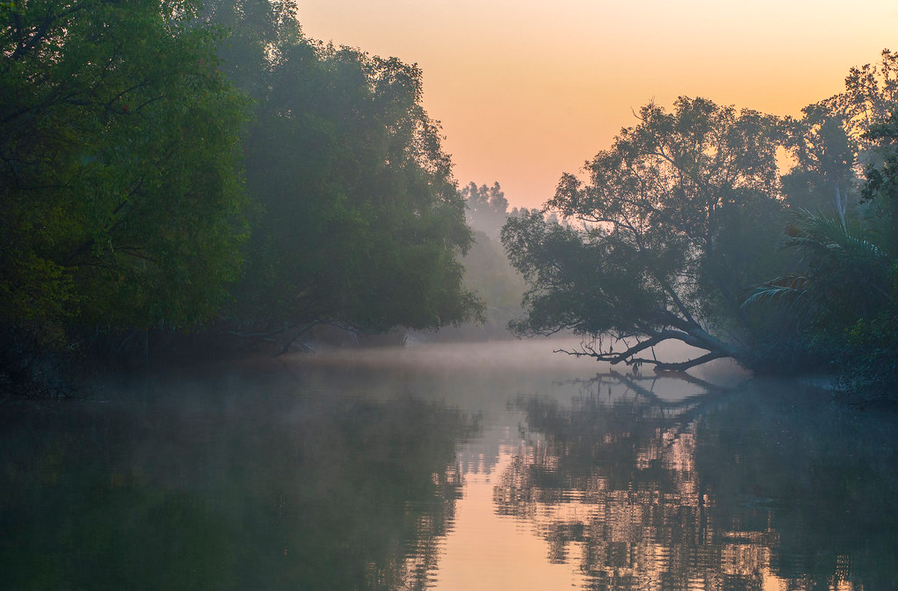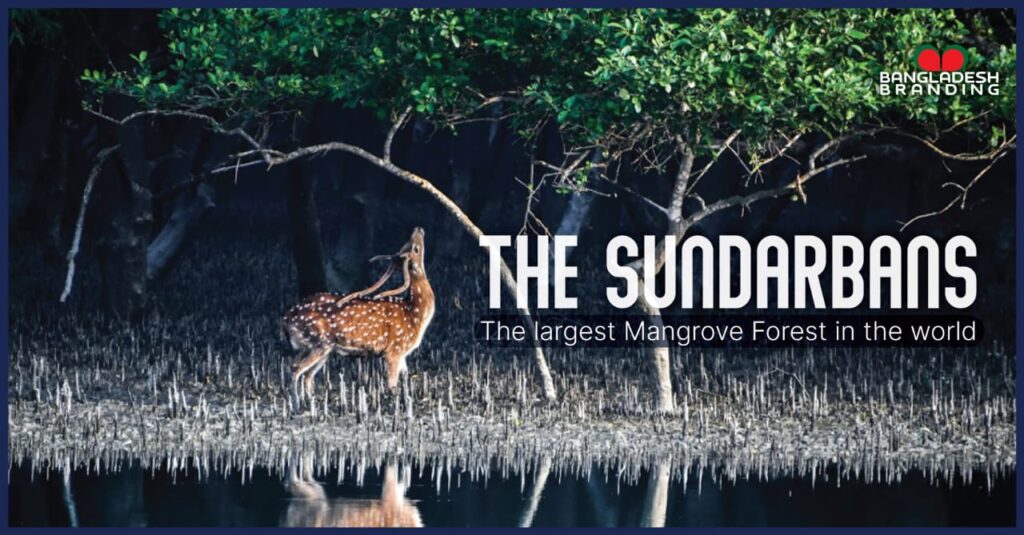
The Sundarbans: A Biodiversity Haven and Nature's Lungs
A common metaphor for forests is “Mother Earth’s lungs,” meaning they are vital to life as we know it. The Sundarbans are a prime example of the vital role mangrove ecosystems play among the various types of forests found throughout the world. The Sundarbans, which span the delta formed by the Ganges, Brahmaputra, and Meghna rivers, are not only the largest mangrove forest in the world but also a UNESCO World Heritage Site, valued for its unique biodiversity and ecological significance.
Understanding Mangroves
Mangroves are specific types of trees and shrubs that grow well in brackish or saline coastal waters. Tropical and subtropical regions, which fall between 25° N and 25° S in latitude, are home to their complex ecosystems.
Adaptations: Mangroves are salt-tolerant trees, also known as halophytes, that have adapted to survive the severe coastal climate. Their complex root systems not only stabilize shorelines and reduce erosion but also aid in their ability to regulate the salty environment.
Ecosystem Contributions: Mangroves play a vital role in the storage of carbon dioxide and offer vital habitats for a variety of aquatic and terrestrial species, despite making up only 0.7% of the world’s coastal zone. Aquatic food webs rely heavily on the primary production of mangroves as a source of energy.

The Sundarbans: A Biodiversity Treasure Trove
Within Bangladesh and India, the Sundarbans, also referred to as Sundarban (meaning “beautiful forest”), cover an area of about 10,000 square kilometres (3,860 square miles). Because of the richness of its flora and fauna, this area is one of the most ecologically significant locations on Earth.
Flora
- Dominant Species: Heritiera fomes (sundari) and Excoecaria agallocha (gewa) are the main species. Of the 50 broad mangrove species found worldwide, 26 are found in the Sundarbans, demonstrating an astounding diversity.
- Vegetation Types: There are several different types of vegetation found in mangrove forests, such as wet alluvial grass forests, brackish water mixed forests, saltwater mixed forests, and mangrove scrubs. Many different wildlife species are supported by this diversity.
Fauna
- Wildlife: The Bengal tigers that call the Sundarbans home are the area’s most well-known inhabitants, and large populations of them live in the mangroves. Spotted deer, wild boar, rhesus macaques, and numerous bird species are among the other noteworthy fauna. A wide variety of reptiles, including many snakes and saltwater crocodiles, can be found in the forest.
- Aquatic Life: A diverse aquatic ecosystem, comprising fish, shrimp, crabs, and dolphins, is supported by the mudflats and tidal channels. The forest supports the local fisheries by acting as a vital breeding ground for numerous marine species.
Historical Significance and Conservation Efforts
Human interaction in the Sundarbans dates back to 200–300 AD, making for a rich and complex historical background. Archeological evidence, such as the ruins of cities built by historical figures such as Chand Sadagar, demonstrates the long-standing relationship between humans and this unique ecosystem.
Forest Management: The first Forest Management Division for the Sundarbans was established in 1869, and significant portions of the forest were designated as reserved under the Forest Act of 1865. A dedicated Forest Division was created in 1879 to manage and protect this invaluable resource.
Conservation Challenges: Deforestation, pollution, poaching, and climate change are just a few of the many threats that the Sundarbans face despite their protections. According to the IUCN Red List of Ecosystems, an assessment conducted in 2020 designated the Indian Sundarbans as endangered, emphasizing the critical need for action.
Conservation initiatives: To preserve the Sundarbans, various measures have been implemented, including the establishment of national parks and wildlife sanctuaries, neighborhood-based conservation programs, and stricter enforcement of wildlife laws.

Tourism and Economic Importance
1. Tourism: The unique beauty and biodiversity of the Sundarbans attract visitors from around the globe. Key attractions include:
- Kotka Beach: A serene beach known for its scenic beauty. Jamtola Beach: Offers stunning views of the mangroves and is perfect for relaxation.
- Hiron Point (Nilkomol): A popular spot for wildlife sightings.
- Dublar Char Island: Known for its rich biodiversity and fishing activities.
2. Economic Contributions: Fishing remains a crucial livelihood for many communities living in and around the Sundarbans. Sustainable fishing practices can help to keep this fragile ecosystem balanced while also benefiting local economies.
3. Accommodation: Visitors have various options for lodging, ranging from budget-friendly guesthouses to luxurious forest lodges and houseboats, which provide a unique experience of staying amidst the mangrove forest.
Getting There and Experiencing the Sundarbans
Reaching the Sundarbans is relatively straightforward, with Khulna serving as the main gateway.
Reaching the Sundarbans is relatively straightforward, with Khulna serving as the main gateway.
1. Travel Options:
- From Dhaka: Visitors can take a bus or train to Khulna, followed by boat tours to explore the mangroves.
- Guided Tours: Taking a guided tour can improve your experience by providing knowledgeable guides who can provide insights into the region’s ecology and history.
2. Exploring the Forest: Once in the Sundarbans, visitors can navigate through the tidal channels and mudflats, witness diverse wildlife, and immerse themselves in the natural beauty of the mangroves.
The Sundarbans is more than just a forest; it’s an important ecological zone that sustains a wide variety of species and offers vital environmental services. Because it’s a unique ecosystem, it highlights the significance of protecting our natural heritage so that future generations can enjoy its beauty and diversity. Sundarbans protection is essential for the region’s biodiversity as well as the communities that depend on it for their livelihood.

